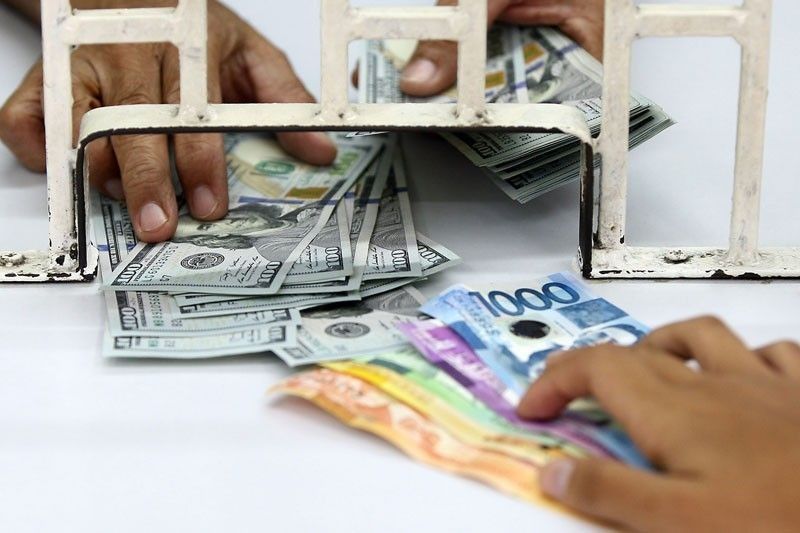Peso breaks through near 4-year peak on economic weakness

MANILA, Philippines — The peso is strong, but it's not for a good reason.
The peso soared to its strongest level against the US dollar in nearly four years on Tuesday, a development not entirely good news as it signals demand for the greenback remain subdued in absence of a convincing economic revival.
The local currency appreciated by 9 centavos from previous day to break through the P48-barrier, closing P48.92 to a dollar. It was the peso's strongest closing since P48.66 to a dollar on Nov. 10, 2016.
Tuesday’s finish was also the peso’s best showing for the day, with an economist expecting further strength due to a pullback in imports for the past months that the economy is battling the coronavirus outbreak and placed on lockdown.
Dollars traded went up to $743.4 million on Tuesday from $409.3 million the previous day.
“Near term pressure for PHP [peso] to remain on appreciation path,” Nicholas Antonio Mapa, senior economist at ING Bank in Manila, said in a note sent to reporters before the daily trading ended.
“With economic momentum slowing considerably while the virus spreads, we may not foresee a quick return to pre-pandemic demand for imports. Thus, PHP may retain its appreciation bias with the CA remaining in surplus,” he explained.
Stronger than expected
A drop in imports, while already tapering off as of June at 24.5% year-on-year, has sapped demand for the greenback that drives the US currency’s strength. This, in turn, has countered weakness from overseas remittances, which typically provided strength to the peso.
The peso’s strong performance amid the pandemic has been highlighted by economic managers trying to defend the economy’s recent downfall. Economic output slumped a record 16.5% on-year in the second quarter and the government does not expect growth to return until 2021.
As it is, the peso is now trading nearly P2 above the revised P50-P52 average forecast of the Bangko Sentral ng Pilipinas (BSP) for 2020. The projection was narrowed from P50-P54 seen last May.
That said, there are no signs the central bank, which has generally kept a hands-off approach to the currency, is willing to intervene to temper its rise. On Monday, BSP Governor Benjamin Diokno even hailed the peso as “most appreciated currency in Asia," citing the currency's rise as proof the economy remain sound despite entering a recession last quarter.
There are pros and cons of strong currency. While a strong peso makes imports cheaper, helping cool down inflation, a firmer currency also cuts through remittance earnings of families dependent on income from abroad, as well as exports.
Mapa said there is no way to go but up for the peso.
“The current account moved back into positive territory as imports imploded, due in large part to the substantial drop off in economic activity, and capital formation in particular,” he said.
“PHP continues to strengthen as the current account moves back into surplus…,” he added.
- Latest
- Trending





























